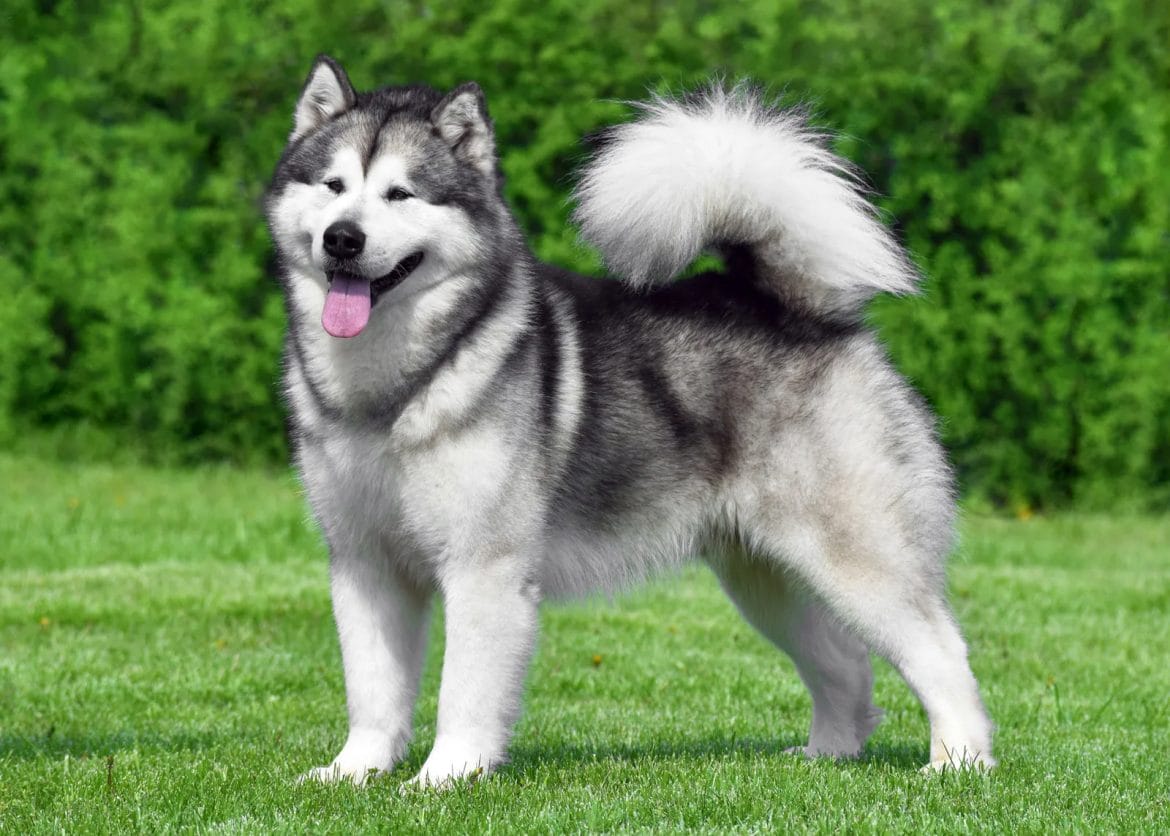Unveiling the Alaskan Malamute: Insights into This Arctic Powerhouse
Meet the Alaskan Malamute, a majestic and powerful breed originally crafted for the demanding task of hauling heavy freight across frozen landscapes. Today, these remarkable dogs have evolved into cherished family companions, demanding consistent leadership and daily activity for their well-being.
Diving into the World of Alaskan Malamutes
Introduction to the Alaskan Malamute Dog Breed
Hailing from the Mahlemiut Inuit tribe, the Alaskan Malamute stands as one of the oldest sled dog breeds, valued for its strength, endurance, and loyalty. Once revered as sled and pack dogs in the Arctic, these dogs have captured hearts worldwide with their athleticism, intelligence, and striking appearance.
Getting to Know the Arctic Powerhouse
Appearance
Picture a large, robust arctic dog weighing between 75-100 pounds, standing proudly at 23-25 inches tall. The Alaskan Malamute boasts a commanding presence with a broad head, erect ears, and a plume-like tail. Its thick double coat showcases various colors, including gray, sable, black, and red, while almond-shaped brown eyes add to its allure.
Characteristics
Bred for harsh conditions, the Malamute exhibits intelligence and independent thinking. Affectionate and loyal to its family, it tends to be reserved with strangers. These energetic dogs thrive when given a job and led by an experienced owner. Early training with positive reinforcement is crucial.
Popularity
Ranked 58th among AKC recognized breeds, the Malamute experiences periodic surges in popularity, especially following events like the Iditarod. Less common than smaller companion breeds, they have garnered an enthusiastic following.
Temperament
Gentle and affectionate with family members, Malamutes, when raised with children, showcase playfulness and patience. However, their aloofness with strangers requires proper socialization. Within their pack, they exude playfulness, patience, and love, thriving when actively engaged alongside their owner.
Lifespan
12-15 years
Coat Color
Various shades of gray, black, sable, and red grace the Malamute's coat, often adorned with markings on legs, belly, chest, face, and ears. No specific color or pattern takes precedence.
Origins
As one of the oldest sled dog breeds, the Alaskan Malamute traces its roots back to the Mahlemiut Inuit tribe of Alaska. It is not a crossbreed but a testament to ancient Arctic lineage.
Guiding the Arctic Companion: Caring for an Alaskan Malamute
Food
Given their high-calorie needs, opt for commercial dog food tailored for large, active breeds. Divide daily portions into smaller meals to prevent bloat, a common concern. Adequate fresh water is a must.
Environment
Malamutes thrive in colder climates. Access to a securely fenced yard is ideal, supplemented by daily leashed walks. Indoors, provide safe chew toys to combat boredom, and crates aid in housetraining reinforcement.
Care
Beyond exercise, Malamutes require a job or activity alongside their owner. Whether it's weight pulling, backpack hikes, or advanced obedience work, engaging their minds is key. Positive reinforcement during training and ongoing socialization are crucial for a well-behaved Malamute.
Grooming
With a dense double coat, Malamutes shed heavily in spring and fall. Daily brushing helps manage loose hair. Baths should be occasional, using a dog shampoo. Regular nail checks, ear cleaning, and teeth brushing are part of their grooming routine.
Preparing for the Arctic Adventure: Essentials for an Alaskan Malamute
Puppy-Proofing Your Home
Secure garbage and dangerous items.
Chew Toy Arsenal
Robust chew toys save your belongings.
Locate Essential Services
Identify a vet, trainer, groomer, and boarding facility.
Shopping List
Acquire food bowls, leash, collar, brush, shampoo, nail clippers, and a dog bed.
Yard or Trails
Fence in your yard or identify nearby hiking trails.
Equipping for Success: Must-Have Gear
Sturdy leash and properly fitted collar
Food and water bowls
Interactive dog toys
Slicker brush and undercoat rake
Dog backpack or cart for hikes
Crate for housetraining
Health Matters: Navigating Alaskan Malamute Well-Being
Common Health Issues
Watch out for hip dysplasia, eye problems, hypothyroidism, and chondrodysplasia. Responsible breeders conduct health screenings on parent dogs, but adopted Malamutes may have unknown genetic conditions.
Vaccination Essentials
Core vaccines include parvo, adenovirus, distemper, and rabies. Leptospirosis vaccine and Bordetella for kennel cough protection are recommended based on lifestyle factors.
Personalizing the Arctic Legend: Naming Your Malamute
Opt for a distinct two-syllable name for training purposes. Popular choices include Yukon, Aspen, Denali, Glacier, and Luna.
Adding a Malamute to Your Family: Buying or Adopting
Adoption
Malamutes are most popular in colder climates like the northern U.S. Adopt from local rescues or shelters for an adoption fee ranging from $50-$150.
Purchase
For those opting to buy from a responsible breeder, expect to pay $1200-$1500. Ensure the breeder conducts health testing on parent dogs and provides a comprehensive sales contract.
In essence, the Alaskan Malamute, with its striking appearance and boundless energy, thrives under consistent guidance from a confident owner. Providing structure, activity, and companionship, these arctic companions reward their families with unwavering loyalty and affection.



No comments